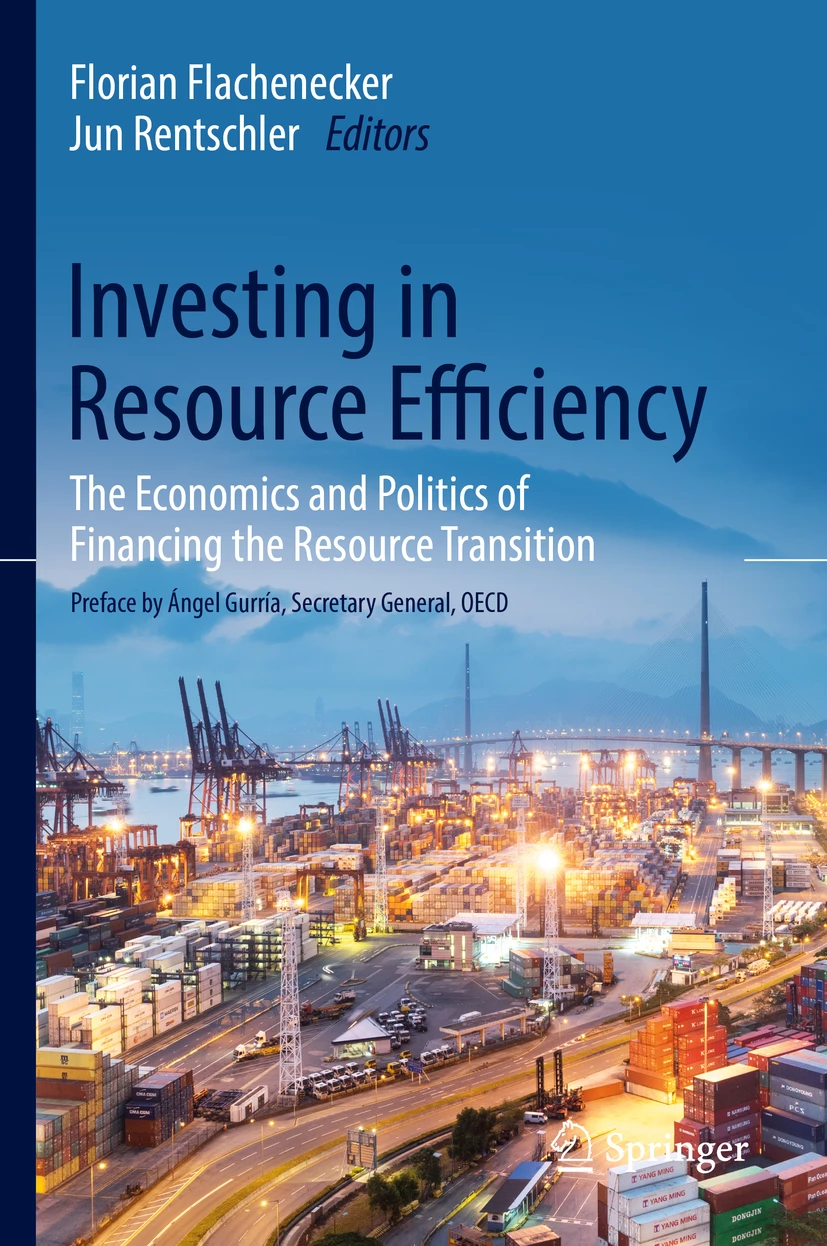“Moving towards a more responsible and efficient use of natural resources is key, not only to address resource scarcity, wastage, and the associated environmental effects, but also for incentivising innovation and modernisation towards a circular economy. Resource efficiency essentially means doing more with less, as it allows us to create more value using fewer natural resources. This transition can contribute to sustainable economic growth that generates welfare, while limiting harmful impacts on the environment and hence future generations.” Ángel Gurría, Secretary General, OECD (from Preface, Flachenecker & Rentschler, 2018)
The need for more resource efficient and circular economies
High and volatile resource prices, uncertain supply prospects, rising demand, and environmental impacts – various factors are putting increasing pressure on policy makers, researchers, firms, and investors to explore pathways towards sustainable and efficient resource management.
Moreover, rapid technological transitions that are changing our lives for the better are also adding to the challenge. The significant increase in renewable energy technologies such as solar power, the increasing proliferation of electric vehicles, and the rapid increase in smart-phone use are some of the trends that are improving people’s lives. Yet, while these developments are in line with the Sustainable Development Goals, they are also driving up demand for critical natural resources.
Resource efficiency could offer one solution to these challenges, yielding substantial benefits, both economically and environmentally.
And yet, while resource efficiency investments could yield both economic and environmental benefits, global resource efficiency has increased by a mere 1% per year over the past three decades. This is insufficient to counterbalance ever increasing resource demand. Even declared champions of the resource efficiency agenda, including the European Union, have yet to deliver on their ambitious goals. Overall, despite high-level attempts to mainstream the resource efficiency agenda, policy measures still lack a coherent, systematic approach and large-scale implementation.
Setting targets… Taking action?
In recent years, numerous initiatives have highlighted the importance of the transition towards more resource efficient and circular economies on national and international policy agendas. Prominent examples include the Sustainable Development Goal 12, the G7 Alliance for Resource Efficiency, the EU Roadmap to a Resource Efficient Europe, Raw Materials Initiative and Circular Economy Action Plan, the OECD work streams on resource efficiency, green growth and green finance, and similar activities by numerous national governments.
Several international financial institutions – including the European Investment Bank, European Bank for Reconstruction and Development, and the International Finance Corporation of the World Bank Group – have put resource efficiency high on their agendas, providing substantial funding for resource efficiency projects. The United Nations have established the International Resource Panel as a dedicated commission of experts on the issue. Such initiatives are underpinned by national, regional, and local efforts to upscale resource efficiency investments, aiming to redirect “waste” back into value chains. Many multi-national companies are now exploring the opportunities of resource efficiency – for instance organized in the Circular Economy 100 group.
So how can ambition, individual projects, and high-level targets be translated into wide-ranging action on the ground?
The economics and politics of financing the resource transition
A new book covers the multi-faceted incentives and complex trade-offs associated with investing in the resource transition – the move towards more resource efficient and circular economies. It offers strategies for improving the efficient use of resources and advancing clean and sustainable development.
As OECD Secretary-General Ángel Gurría emphasises in the preface to this book, the transition to a more resource efficient and circular economic growth model – the resource transition – is an integral component of sustainable development. Various contributions in the book explore the factors and approaches that can determine the success of the resource transition, focusing on the role of investments. In particular, decision makers on the ground play a crucial role: While governments determine overall policy frameworks, businesses and individuals are at the forefront of implementing the measures and investments for increasing resource efficiency.
While there may be little doubt regarding the benefits of being more resource efficient, becoming more resource efficient is a complex task. Firms are faced by a range of market frictions and barriers, which can dis-incentivise or even prevent them from undertaking investments in efficiency and low-carbon technologies.
Rather than merely listing the benefits of resource efficiency, the book critically assesses case studies and academic literature, providing differentiated evidence on what investments in resource efficiency can deliver or not. For instance, the empirical findings suggest that not all firms, sectors, and countries are likely to benefit equally from the resource transition. This requires policy makers and researchers to identify potential adjustment costs and design mitigation strategies for people, sectors, and regions that may suffer in the short-term. The book centres around three main massages:
- Increasing resource efficiency requires action on the ground: Individual and decentralised decisions by firms and individuals are at the forefront of determining investments in resource efficiency – for instance by developing and adopting modern, efficient technologies and production processes. High-level policy frameworks and targets must account for the complex realities that actors such as SMEs are confronted with in practice. To this end, platforms are required that allow information on ambitions and practical feasibility to flow between international, national, and local levels.
- Significant investment barriers are impeding progress: The incentives for investments in resource efficiency are determined in a complex context of competing investment opportunities and barriers to action – including information, capacity, and financial constraints. Addressing this web of constraints requires smart and integrated policy responses that – for instance – support firms by providing dedicated schemes to mitigate investment barriers, but that also address the underlying and systemic causes that created these barriers in the first place.
- The ambitious targets for resource efficiency must be matched by carefully designed policy packages: Investing in resource efficiency requires the mobilisation of capital from the public and private sectors. To mobilise these resources, policy frameworks must be designed to mitigate and remove the barriers to investment, and to balance economic, environmental, and social goals. Overall, integrated policy and regulatory strategies are needed to mitigate transitional costs, manage the trade-offs, and deliver the full potential of resource efficient and circular economies.

Disclaimer: The findings, interpretations, opinions, and conclusions expressed in this post and the arguments employed herein are entirely those of the authors. They do not necessarily reflect the official views of the OECD, or its member countries. They also do not necessarily represent the views of the International Bank for Reconstruction and Development/World Bank and its affiliated organizations, or those of the Executive Directors of the World Bank or the governments they represent.
Read more about this topic in a related OECD blog.




Join the Conversation